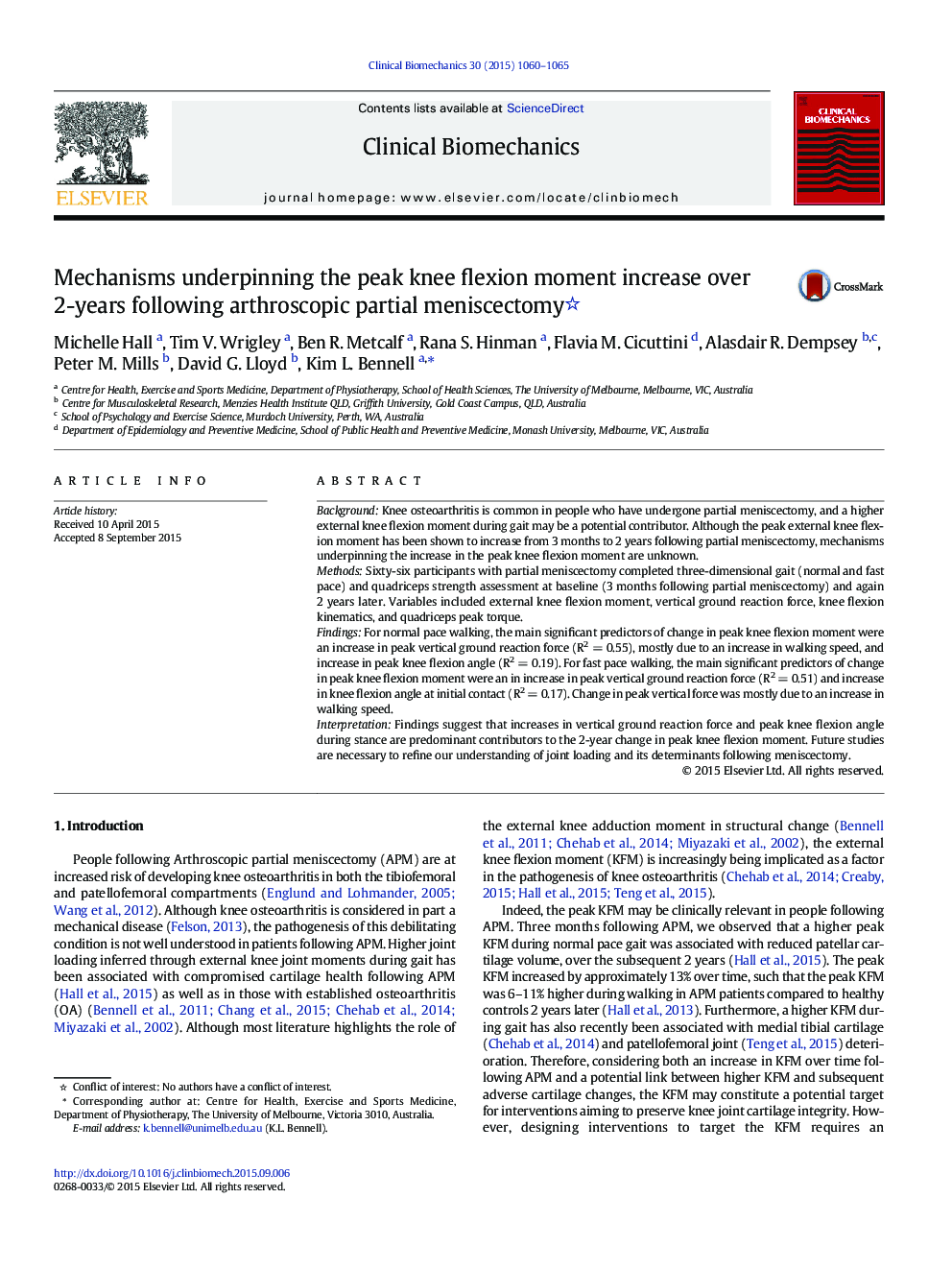| Article ID | Journal | Published Year | Pages | File Type |
|---|---|---|---|---|
| 4050071 | Clinical Biomechanics | 2015 | 6 Pages |
•Change in vertical ground reaction force associates with change in knee flexion moment.•Change in knee flexion angle contributes to change in knee flexion moment.•Change in peak vertical force was mostly due to an increase in walking speed.
BackgroundKnee osteoarthritis is common in people who have undergone partial meniscectomy, and a higher external knee flexion moment during gait may be a potential contributor. Although the peak external knee flexion moment has been shown to increase from 3 months to 2 years following partial meniscectomy, mechanisms underpinning the increase in the peak knee flexion moment are unknown.MethodsSixty-six participants with partial meniscectomy completed three-dimensional gait (normal and fast pace) and quadriceps strength assessment at baseline (3 months following partial meniscectomy) and again 2 years later. Variables included external knee flexion moment, vertical ground reaction force, knee flexion kinematics, and quadriceps peak torque.FindingsFor normal pace walking, the main significant predictors of change in peak knee flexion moment were an increase in peak vertical ground reaction force (R2 = 0.55), mostly due to an increase in walking speed, and increase in peak knee flexion angle (R2 = 0.19). For fast pace walking, the main significant predictors of change in peak knee flexion moment were an in increase in peak vertical ground reaction force (R2 = 0.51) and increase in knee flexion angle at initial contact (R2 = 0.17). Change in peak vertical force was mostly due to an increase in walking speed.InterpretationFindings suggest that increases in vertical ground reaction force and peak knee flexion angle during stance are predominant contributors to the 2-year change in peak knee flexion moment. Future studies are necessary to refine our understanding of joint loading and its determinants following meniscectomy.
